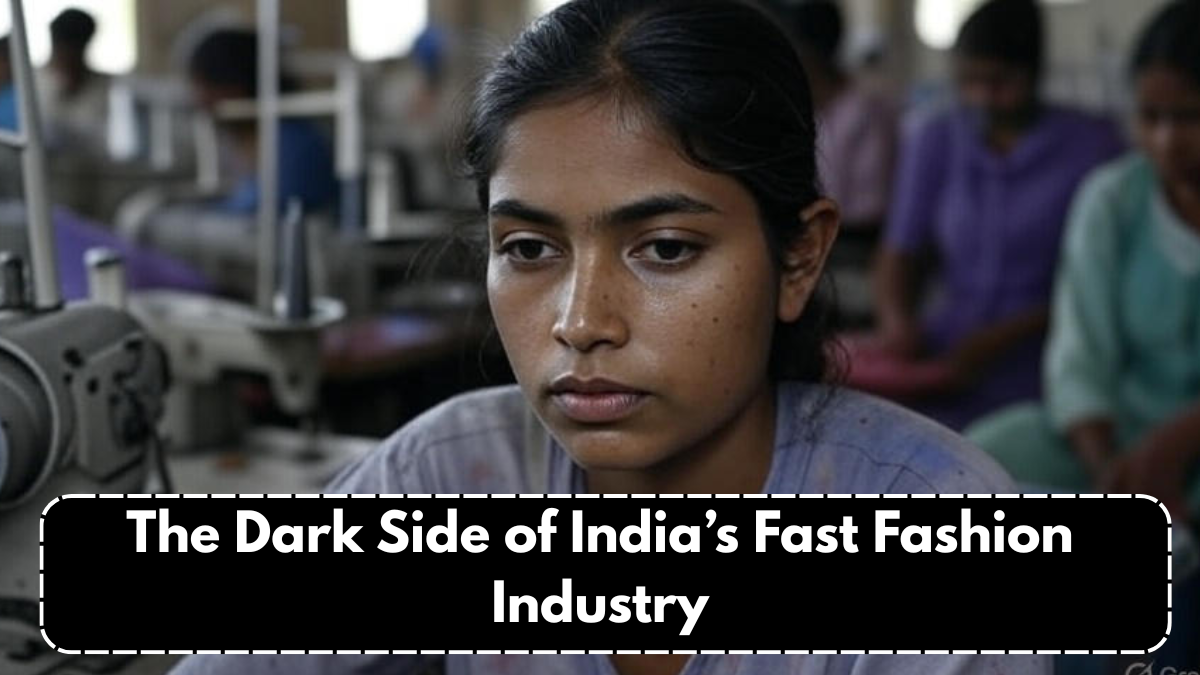The rise of fast fashion India has transformed shopping habits, making trendy clothing affordable and accessible to millions. With global brands expanding their presence and local retailers pushing low-cost styles, the industry is thriving. However, this boom comes with a heavy price. From pollution to labor exploitation, the environmental and social costs are too big to ignore. The growing awareness of sustainability issues is pushing policymakers, businesses, and consumers to rethink their choices.

The Growth of Fast Fashion in India
The fashion sector in India is one of the fastest growing markets in the world. Fast fashion India owes its success to a combination of cheap production, high demand from a young population, and rapid adoption of e-commerce platforms. With disposable incomes rising, Indian consumers want to stay on-trend without spending a fortune.
Major players such as Zara, H&M, and domestic online retailers are driving this growth. But behind this rapid expansion lie sustainability issues like textile waste, water consumption, and poor working conditions for factory workers.
Environmental Impact of Fast Fashion
The environmental footprint of fast fashion India is massive. The textile industry consumes huge amounts of water, and dyeing processes often release toxic chemicals into rivers. The production of synthetic fabrics like polyester also adds to microplastic pollution.
Some key sustainability issues include:
- High water usage for cotton cultivation
- Air and water pollution from dyeing and chemical treatments
- Mountains of textile waste ending up in landfills
- Greenhouse gas emissions from polyester and synthetic fibers
Table: Environmental Costs of Fast Fashion
| Factor | Impact on Environment | Scale in India |
|---|---|---|
| Water usage | Cotton farming requires vast water supplies | 22,500 liters for 1 kg of cotton |
| Chemical waste | Dyeing pollutes rivers and soil | Major rivers near textile hubs affected |
| Textile waste | Discarded clothes end in landfills | Millions of tons annually |
| Carbon emissions | Synthetic fabrics emit greenhouse gases | Rising due to polyester demand |
This table highlights how fast fashion India directly contributes to environmental damage, making the case for urgent reforms.
Social and Economic Dimensions
Beyond the environment, fast fashion India has severe social consequences. The demand for low-cost clothing often leads to poor working conditions and low wages for garment workers. In unregulated factories, labor rights are ignored, leading to exploitation, unsafe working environments, and child labor in some cases.
At the same time, sustainability issues extend to the economy. The obsession with cheap, disposable clothing discourages investment in high-quality, durable fabrics and traditional crafts. This threatens India’s rich heritage of handloom and artisanal work, which struggles to compete with mass-produced fashion.
The Road to Sustainable Fashion
To overcome the negative effects of fast fashion India, businesses, governments, and consumers must act together. Some solutions include:
- Promoting eco-friendly fabrics and organic cotton
- Encouraging recycling and circular economy models
- Enforcing labor laws to protect workers’ rights
- Supporting traditional crafts and ethical fashion brands
The growing popularity of conscious consumerism is a positive sign. Young buyers are increasingly aware of sustainability issues and willing to invest in ethical and eco-friendly clothing. However, systemic change requires stronger policy interventions and industry accountability.
Conclusion
Fast fashion India has brought affordability and variety but at the cost of the environment and society. The mounting sustainability issues cannot be ignored, as they affect everything from rivers and climate to workers’ dignity. Moving towards sustainable fashion is not just an option; it’s a necessity for India’s future. If consumers, businesses, and policymakers work together, the country can create a fashion industry that is both stylish and responsible.
FAQs
Why is fast fashion India considered harmful?
It is harmful because it creates pollution, exploits workers, and produces massive textile waste.
What are the main sustainability issues in the fashion industry?
The main issues are water pollution, carbon emissions, textile waste, and labor exploitation.
How do consumers contribute to fast fashion India problems?
By constantly buying cheap, disposable clothing, consumers fuel unsustainable production cycles.
Are there sustainable alternatives to fast fashion India?
Yes, alternatives include eco-friendly fabrics, ethical brands, and supporting traditional crafts.
How can India reduce sustainability issues in fashion?
India can reduce issues by encouraging recycling, strict environmental laws, and promoting conscious consumer choices.
Click here to learn more